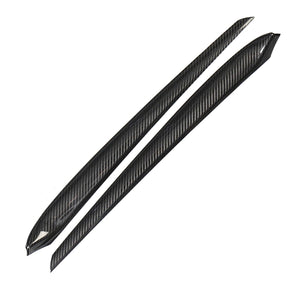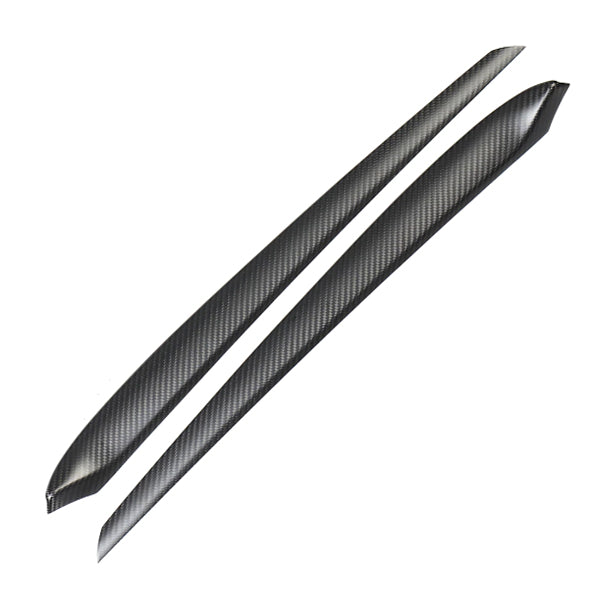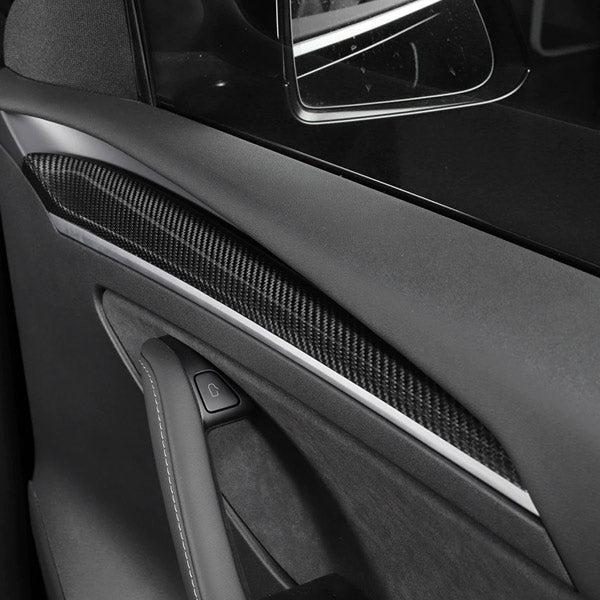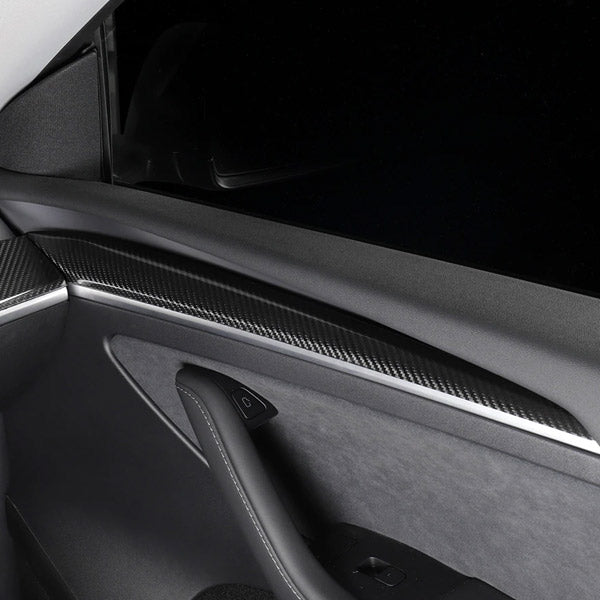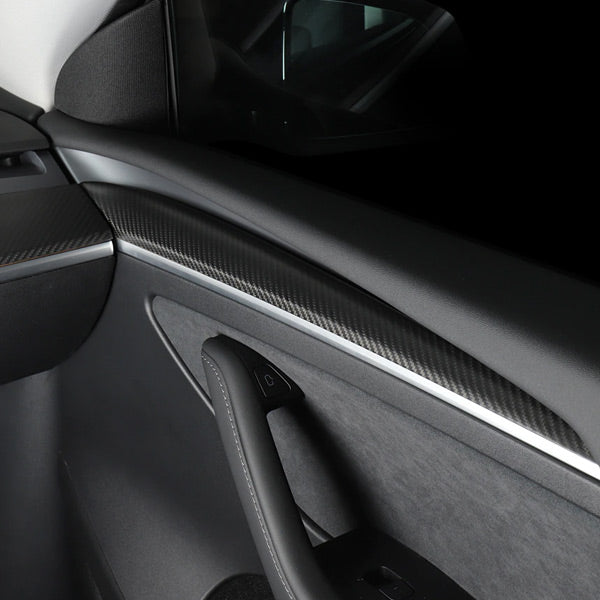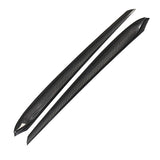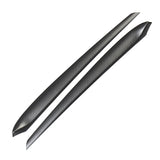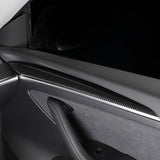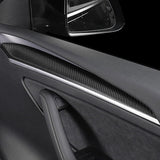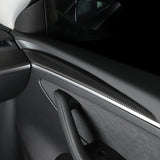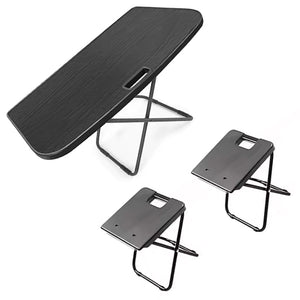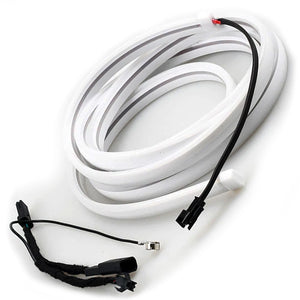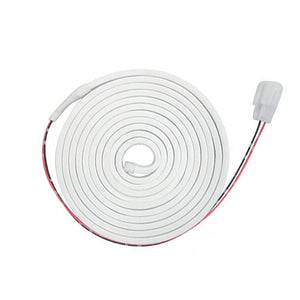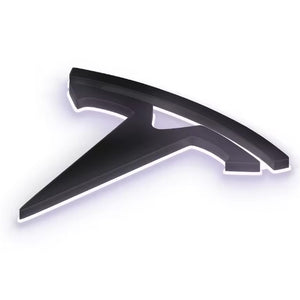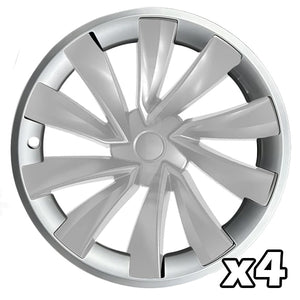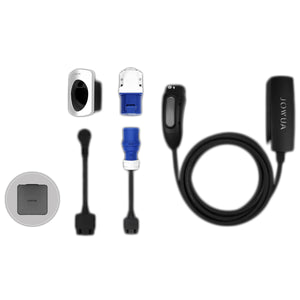Carbon Door Insert
Tesla Model 3 - Y
Made entirely of carbon, these door inserts give unparalleled depth to the interior of your 2021-2023 Model 3 or Y.
A real carbon element that makes the difference
The feat that an insert must be capable of is to give the impression that it is an integral part of the finish of your cabin. It is for this reason that after multiple tests, Model Sport is able to provide you with carbon door inserts that perfectly follow the lines of your original trim.
Which will give a perfect finish to the carbon trim of your Model 3 or Y.
Available in 3 finishes (gloss, matte or forged), it is advisable to modify this part according to your dashboard.
Features of carbon door inserts for Tesla Model 3 and y
- Original design: changes the look of your Tesla
- Perfect finish: in real carbon
- Applies easily: durable 3M double-sided
- Does not leave glue residue after uninstallation
- Year of correspondence: Model 3 and Y version 2021-2023

_________
Are you interested in Model Sport's carbon manufacturing logic? What does a composite material mean? The usefulness of a carbon part in the different industries? We can deal with the subject by focusing on a multitude of parts:
• It is interesting to look once and for all at what carbon really is
• Model Sport, the brand with an unusual sense of detail
• What you can find You you will be able to get a carbon component with confidence.
Composite material: what is its meaning?
This type of elaboration is a good way to obtain an object with high mechanical properties while using two components that cannot be associated with each other, but which can be associated.
Carbon or Texalium, what can you find for your electric?
Truth be told, there's a wide catalog of carbon genres and lots of ways to work with them. A distinction must be made which will be important for purists: what is commercially called "carbon" actually has the name "carbon fiber composite", it is important to know in the world of lamination this is this name that is used.
3K twill in 200gr, the use of carbon fabric:

The 3K carbon in twill weave is undoubtedly the most accustomed of its variety, let's start with this one. Each way of weaving carbon has a specific name, that of twill is one.
To give you an idea, the figure just above illustrates how each carbon weft and weave, with each other. One of the reasons for the extensive use of twill is undoubtedly its maneuverability: it is able to take the shape of almost any architecture.
To initiate them, we will not go into more details of the 3/1, 2/2, 4/4 interlacing type to simplify this explanation as much as possible. The 3K sign evokes 3000 carbon filaments for a weft.
Information that will give you a more or less precise image of what the diameter of a strand of carbon is: 1/20th the thickness of a human hair, so be aware of the importance of adding these latter. To design and name the most common types of carbon used in the different fields of industry, we must mention 1K, 3K, 6K and 12K. The 3K is the most popular in the Tesla world.
Finally, to finish the analysis of the carbon fabric, if it is mentioned 200gr/m², this announces its weight on a surface of 1 meter x 1 meter before it is associated with resin. For the Tesla community, the 3K twill in 200gr/m² is the most noticed for its aesthetic configuration considered to be much better than its friends, but not for its mechanical resistance provisions.
Forged carbon:

A qualification that may seem excessive for an aspect that is very divergent from the standards, however, this molding method is in no way innovative.
To roughly explain how it is produced: you have to cut each carbon frame into small pieces and then spread them evenly over the entire mold.
To this, the resin is applied for the whole is enclosed (the positive mold and the negative) then put under compression by increasing the temperature of the latter. This manufacturing process makes it possible to intensify the density of carbon fiber per square centimeter compared to the resin and thus gives a stiffer and lighter part.
Lamborghini is the pioneer in the automotive world to have used the latter. Note all the same that its appearance and use has been present since the 80s concerning the production of missile heads.
Texalium, the unknown:
Texalium is a completely different material, generally mistaken for carbon by amateurs. It is actually a glass fabric loaded with aluminum and then dyed to the desired color to give it a different appearance.
Its mechanical properties are below the usual glass fabric (itself below the carbon fabric) and its application is purely for aesthetics. We have to wait longer for other countries to see an innovation arrive here, Texalium is no exception to the rule, because it has been widespread in the United States for a few years, while it is only just becoming known in France.
How to physically distinguish carbon?
We are going to provide you with some examples of the use of carbon fiber. Note that if you are interested in one of these versions, Model Sport remains open to customization and can therefore provide you with a quote.
Can carbon be subjected to high loads?
An oft-mentioned question, perhaps in the wrong way, but rightly so. In reality, it is more accurate to wonder about the possible comparisons with other materials. As an indication, 1 kg of carbon is stronger than 1 kg of aluminum alloy.
Nevertheless, the term "resistant" deserves an explanation because an aluminum part will perhaps behave better during impact, which will depend on the weave used for the carbon in comparison. This is one of the aspects of carbon that allows us to produce components as thin as inserts.
The dashboard insert for the Y or 3 models is worth mentioning: this element is only useful for its aesthetics (as with most carbon components for Tesla) over a length of 1m40 and a thickness not exceeding 0.5mm. Knowing that they are sent worry-free to France or other neighboring countries.
How to explain the price of carbon?
What is essential to explain in order to grasp the price of carbon, we must go back to the operation of elaborating it.
The technique of shaping a carbon frame is already relatively complicated. It takes a very heavy processing operation in terms of energy consumption to manufacture carbon fiber: we start with a specific synthetic fiber, called polyacrylonitrile, which will have to be put under oxidation and then carbonized in a way specific to obtain carbon fiber.
In this era where more and more industries responsible for their environment are waging war on chemicals, we must take note of the fact that organizations are looking for solutions to continue to produce carbon fiber, respected for its lightness , while having an eco-responsible manufacturing process.
There is an exponential growth in demand for the use of bio-based materials to eliminate the vast majority of chemicals and also to cut the price in half. Also take into account that the equipment required to make even a carbon fiber is quite expensive in every sense of the word. Remember that a fiber is 1/20 the thickness of a human hair.
For information, the square meter of carbon fabric is purchased for 30 euros. This applies in particular to the 200 g/m² twill 3K carbon. Added to this are the number of layers and the price of the resin, which is not comparable in quality and price. We also need a laminator with experience in laying carbon materials.
What differentiates Carbon for Tesla from Model Spor
A part that we are lucky to master, because we scrupulously analyze all the stages of production.
In the field of the production of carbon parts, the creator of the company Model Sport, François SPITALS, implements all his knowledge in the field of design and creation of automobile bodywork to provide the best in terms of finishing.
Fabric or carbon pieces for Tesla?
The carbon fabric used is deliberately focused on its aesthetic appearance before its mechanical properties. No constraints, most of the time, will be subject to the elements installed on your Tesla.
These elements simply mark the increased sportiness of any vehicle from the American firm. Any type of carbon, even one that will be categorized as low-end, will be able to withstand the constraints imposed on it.
Moreover, the most used variety, even the most standard, is the HR, for "high resistance", which is very appreciated for its versatility and its aptitude for flexibility.
It is exclusively this type of carbon, HR, which is used by Model Sport for the manufacture of all its parts. We can compare it to the HM (High Modulus) which will be much lighter. But on the other hand, it is also much more brittle, so brittle that it must be combined with HR to guarantee its function. Forged carbon illustrates this use primarily for its appearance than for its properties, however, it does have multiple characteristics.
The important role that resin brings to assembly
Now, let's show the centerpiece of carbon components: the resin. For any piece that is intended for the general public and that requires mass production, polyester will be prioritized with the application of fiberglass. You should know that for carbon parts that will be very exposed to heat, polyester will also be used for its high resistance to high temperatures.
It is this resin that is used to manufacture exhaust cartridges for motorcycles, for example. Epoxy resin will considerably increase the endurance of parts subjected to residual loads. The anti-UV resin is still a step above: no yellowing in the long term.
It is for this argument that we apply this product type. The aggressions of UV rays emitted by the sun will thus have no effect on your carbon parts, what is more, the appearance is more transparent. This is the strongest point of this type of resin: the parts will not yellow in a few years.
Not mentioning this point is a lack of knowledge: if the treatment is not present, beware of too hot summers which will give the carbon parts a duller appearance. It should also be understood that the resin used will have a price directly related to its application, its quality and its durability.
Although the price may vary depending on the manufacturers and retailers, it is interesting to make a comparison on French territory between these multiple resins:
• The kilo of Polyester resin is worth between 8 and 10€
• The kilo of anti-UV Epoxy resin is worth between 55 to 65€
What is the topcoat on a carbon part?
Varnish is the end point of a carbon part.
To guarantee almost infinite durability, at the very beginning we manufactured carbon components without any finishing paint. The problem was that production was needed without the possibility of catching up and therefore a high rate of “waste”.
Which induces a very high and counterproductive scrap rate taking into account that the spirit of the Tesla brand is to reduce pollution, so this waste was nonsense.
To obtain a more "standard" result in the production of our carbon elements, we have therefore started to use a higher quality varnish. The application of the matte varnish is carried out meticulously, as well as the polishing of the parts with a glossy finish to guarantee a perfect appearance.
The type of carbon on the Tesla S and X automobiles
There are many differences between the interiors of the Model S and X. However, it is true that many of the components are virtually identical.
So in most cases we call the owner, after ordering, to find out more information about the vehicle.
Model S and X interior
A real carbon tuning is also possible for the Model S and X even if they are less numerous than the Model 3. Inserts such as for the dashboard, the central console or the part of the cup holder.
One of the main elements of your Model S or X is undoubtedly the steering wheel. This can be personalized to infinity, in twill or forged carbon, glossy or matte and leather or Alcantara trim.
The latter will have a relatively precise customization, which many other accessories will be able to benefit from in the future.
Model S and X exterior features
The most considered body element on the Model S is undoubtedly the Performance Spoiler. As with all Model Sport spoilers, the internal structure as well as the entire bonding surface are reworked upstream.
Although the dissimilarities made on the parts mentioned are not visible once the spoiler is in place, it will have the advantage of possessing the lightness provided by carbon.
We are also currently investigating the Plaid version. Carbon adapts to all supports. Although it is very often used in the particular field of the automobile simply for its appearance, it will find its place on elements such as the grille or the mirror shells, with a slight loss of weight in the process.
Model Sport remains flexible and will respond to your request in case you wish to achieve finishes other than 3K twill carbon.
Carbon fiber on the Tesla Model 3 and Y
The Model 3 marked the advent of carbon in the Tesla world: it is the most modified electric vehicle today. Share a lot of similarities with the Model Y, let's see what you can find more about them.
Model 3 and Y: their interiors and accessories
The Tesla family of owners gets a certain culture of its own, carbon inserts are part of it. Producing such a thin element in large quantities while maintaining a similar quality is a technical feat. Each insert must be able to be installed without giving an "addition" effect. It is on this assumption that the quality of an insert must be judged.
Getting the Model Sport inserts to fit perfectly into the Model Y or 3 interior took a lot of trial and error to find the right manufacturing technique.
What defines the precision of the insert lies in the meticulousness of the cut, as well as in the overall shape taking into account an ultra-thin double-sided in order to pose as close as possible to the elements. But you can just as well opt for a real carbon replacement element, which will be positioned directly in place of the changed part. The carbon dashboard and door trim are works of art that will give a totally different perception to the interior of your Tesla.
Model 3 and Y: exterior modifications
As with the interior, the exterior parts of the Model 3 and Y have the right to an abundance of carbon parts produced in series or custom-made. Here too, in a 3K twill or forged version, you will have the choice between the matte or shiny finish. The most requested carbon part is undoubtedly the Performance spoiler in its matt version.
Having become almost a standard in the Tesla world, it will be fixed directly on the edge of the trunk.
You can also choose more advanced modifications like the real carbon front cover, an absolutely beautiful part that will effectively give you weight loss, while keeping its use fully functional.
- 🇫🇷 Gestionnaire Français
- Commandez directement au Fabricant ou au Distributeur
- Payez que votre produit (pas de frais de stockage ni de taxe territoriale)
- Livraison dans toute l'Europe !
Vous remarquerez que le bouton au-dessus vous redirige vers un des distributeurs ou fabricants du produit.
La major partie des accessoires Tesla proviennent de Chine, commander via les plateformes Aliexpress, Alibaba, Amazon, Hansshow ou Jowua vous donnera la possibilité d'obtenir le produit sans intermédiaire.
Les produits vendus en France ou en Europe proviennent du même fabricant Chinois (ou autre), mais avec une marge supplémentaire servant à payer les frais de fonctionnement de la société.
Cependant, l'avantage de commander à proximité est d'obtenir un délai de livraison plus rapide (néanmoins nous proposons aussi des produits expédiés directement depuis des stock Français ou Européens)
Model Sport a initialement commencé en faisant du stock en France, nous connaissons donc quels sont les fabricants de confiance et leur méthode de travail. Si bien que nous les citons avec leurs accords : MAOFA, BFB carbon, Yute Technologie, DCR Tuning, LITA Accessories, Jogon, Ever carbon, Carbonss Tuning, Jowua.
Ces fabricants, parmi quelques autres, sont les plus actifs et sérieux dans leur qualité de fabrication. Nous vérifions que les produits proviennent systématiquement de notre liste de fabricant. Ainsi, que vous commandiez via un distributeur Aliexpress, Amazon ou autre, nous savons que le produit sera de bonne facture.
